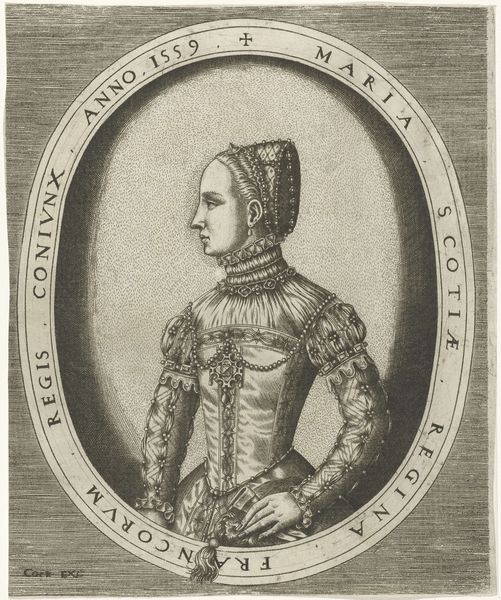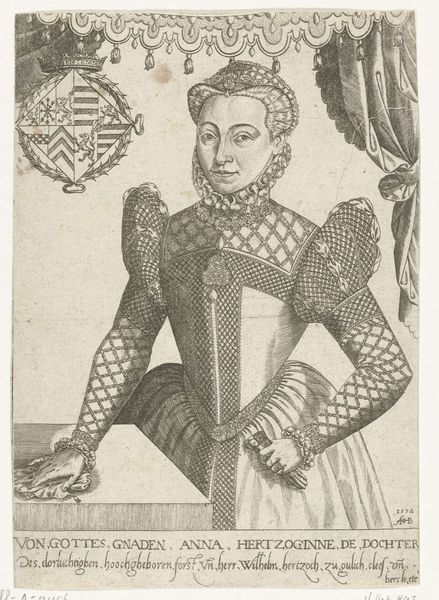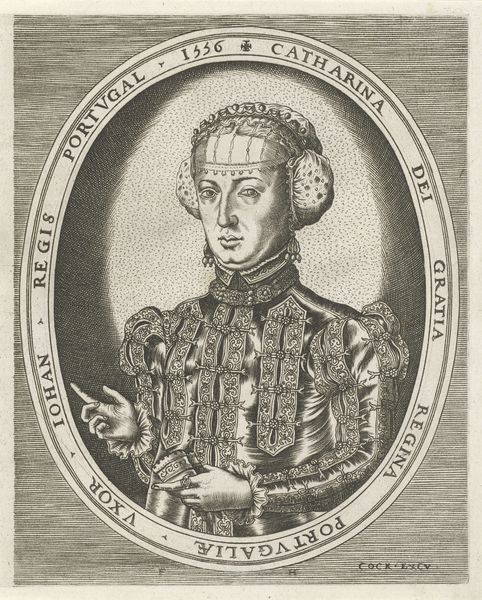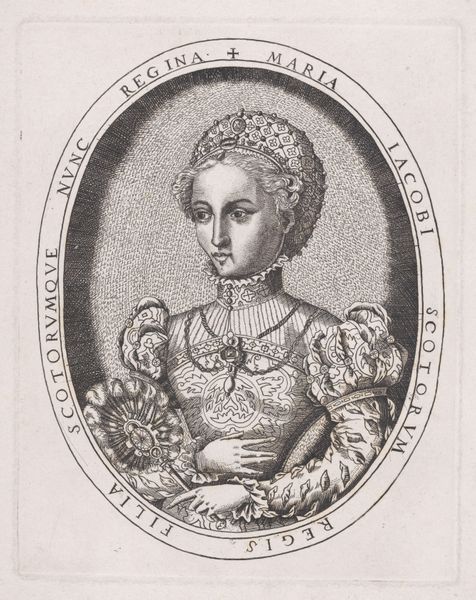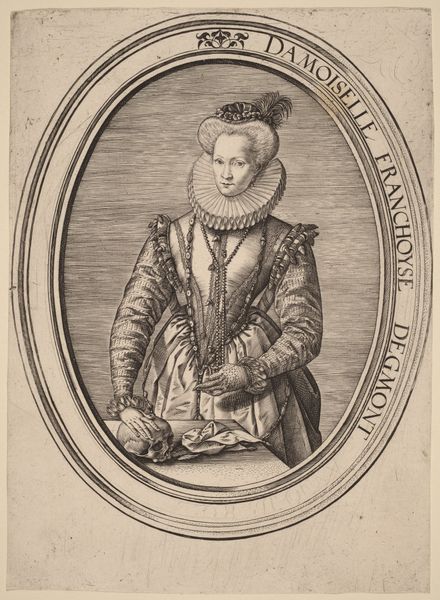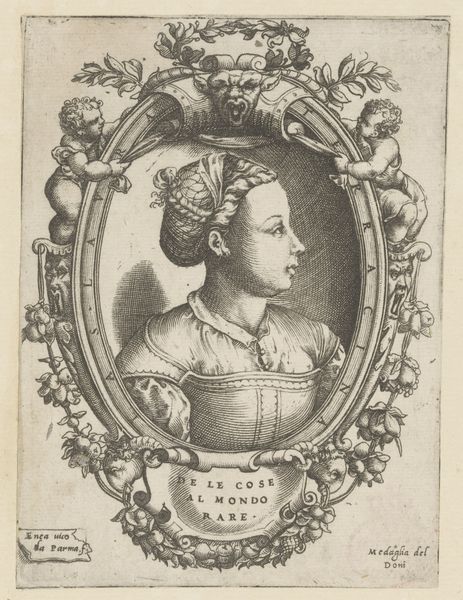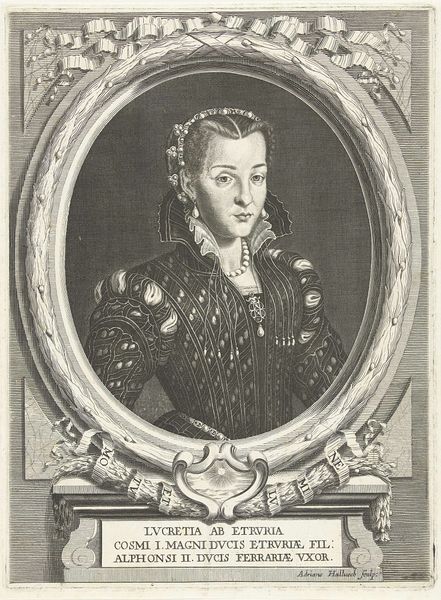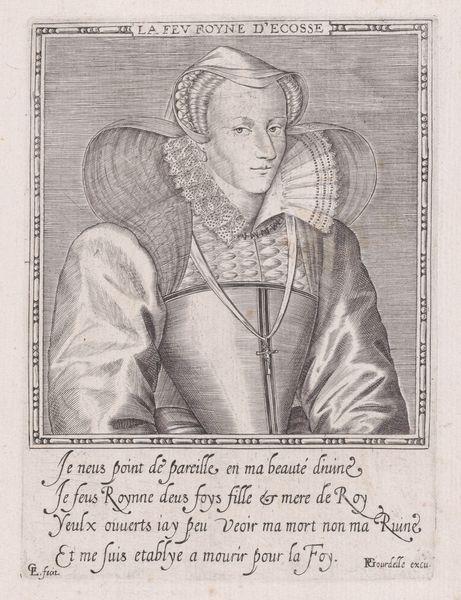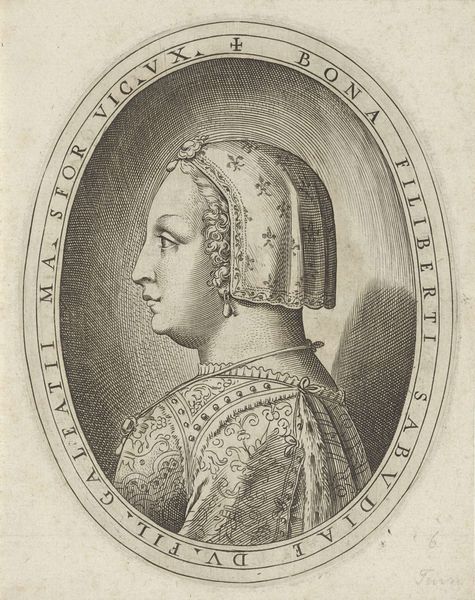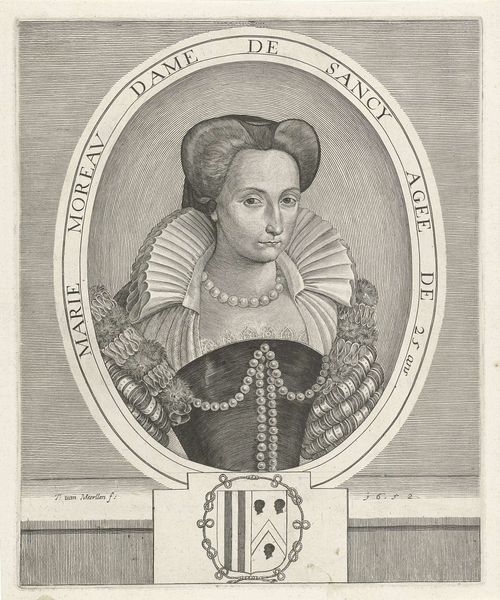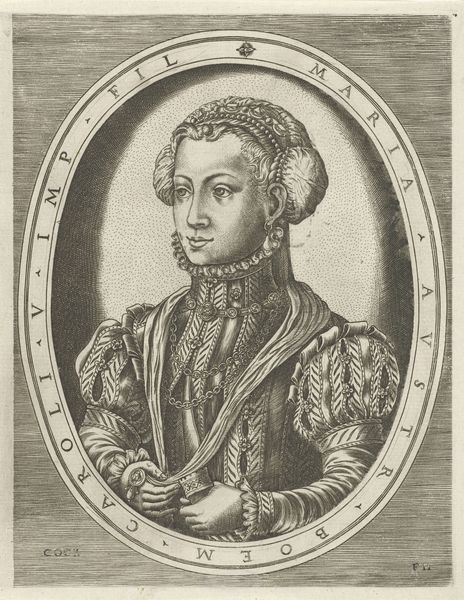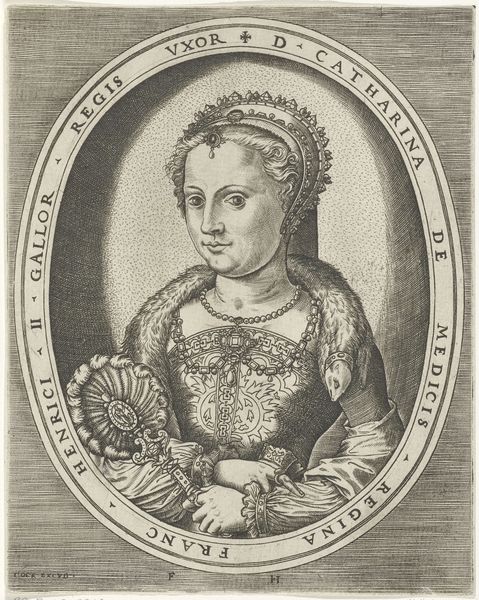
engraving
#
portrait
#
mannerism
#
figuration
#
history-painting
#
engraving
Dimensions: height 194 mm, width 154 mm
Copyright: Rijks Museum: Open Domain
This engraving of Elisabeth of Valois was created in 1559 by Frans Huys, capturing the likeness of the young queen. Note the delicate flower she holds, a seemingly simple object laden with meaning. Flowers, throughout history, have been potent symbols of youth, beauty, and, poignantly, transience. We see echoes of this motif in Botticelli's "Primavera," where Flora scatters blossoms, and Ophelia's tragic garland in Shakespeare's Hamlet. The flower, thus, becomes a memento mori, a reminder of life's fleeting nature. Consider the cross above her head, marking not only her virtue but her mortality. The flower, juxtaposed with the cross, speaks to the complex dance between earthly beauty and spiritual promise, a dance that continues to engage us, subconsciously, across centuries. As we observe the symbol’s non-linear progression, it resurfaces, evolves, and takes on new meanings in different historical contexts.
Comments
No comments
Be the first to comment and join the conversation on the ultimate creative platform.
